
Quickly to the right hardware equipment …
ASRock B460 Steel Legend Layout, Design and Features
ASRock B460 Steel Legend RGB lighting
ASRock B460 Steel Legend Voltage Regulator and Heat Sink
ASRock B460 Steel Legend Equipment
ASRock B460 Steel Legend Expansion cards
ASRock B460 Steel Legend Memory
ASRock B460 Steel Legend Hard disk drive connectors
ASRock B460 Steel Legend USB and Firewire
ASRock B460 Steel Legend Network
ASRock B460 Steel Legend Sound
ASRock B460 Steel Legend ATX back panel connectors
ASRock B460 Steel Legend PC System
Layout, Design and Features …
The ASRock B460 Steel Legend High Density Fiber Optic Sapphire Black PCB board in black/grey/white camouflage optics makes a cleanly processed impression. The motherboard has premium 60A power chokes, 9 power phase design and 7.1 HD audio via the ALC1200.
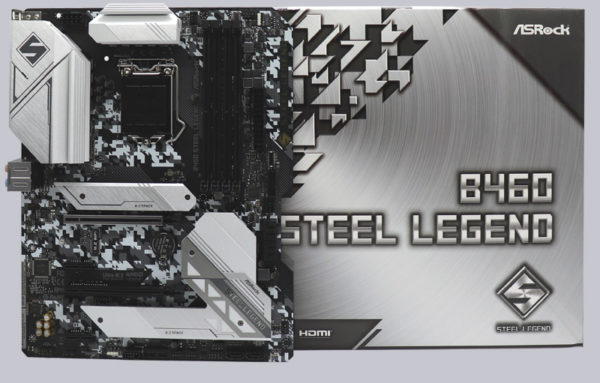
The ASRock B460 Steel Legend offers two fast Ultra M.2 slots for PCIe Gen3 x4 modules with up to 32 Gb/s connection and one M.2 2230 slot for WIFI/BT. On the following picture you can see the PCIe 3.0 Steel slot and the M.2 slots, even both M.2 sockets are equipped with a heatsink each. The lower Ultra M.2 slot shares the heatsink with the chipset. We tested the B460 Steel Legend with a Crucial P2 500GB M.2 NVMe SSD, as you can see here with the M.2 coolers (the so-called M.2 Armors) removed.
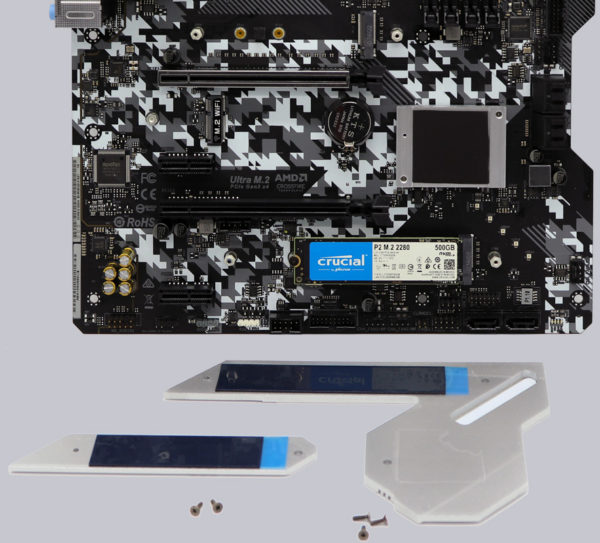
RGB lighting …
As soon as you disassemble the chipset and M.2 cooler, you immediately notice another special feature and these are the five small SMD RGB LEDs, which were placed under the cooler, which brings us to the RGB lighting of the ASRock Steel Legend motherboard.
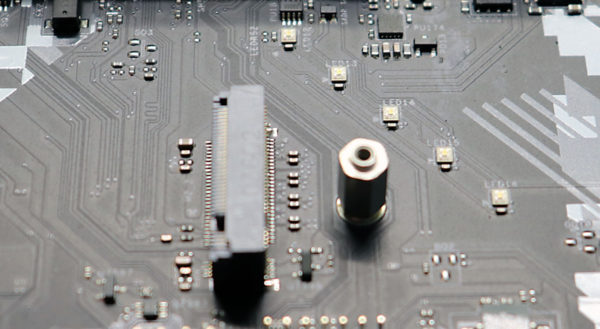
Because RGB lighting has already become a selling point for many and ASRock has also done a lot. You can connect conventional 5050 RGB stripes to the white 4-pin 12V RGB header, for example to illuminate the housing. Additionally, there is a grey polychrome RGB connector, which supports individually addressable LEDs with addressable RGB stripes via the WS2812B. There is also an RGB and an aRGB header in the upper corner near the CPU cooler connector.
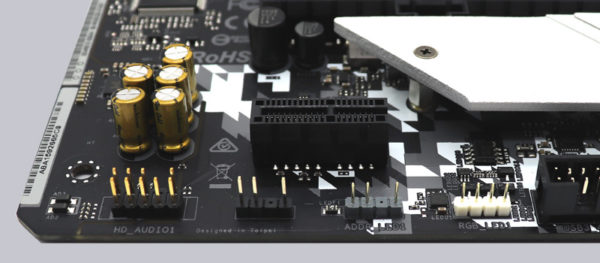
In addition, ASRock has also installed on this ASRock B460 Steel Legend motherboard a lot, to be exact eleven, more aRGB LEDs on the bottom side in the area of the SATA cutout.

Here you can see the small addressable LEDs under the Steel Legend logo and Steel Legend lettering.
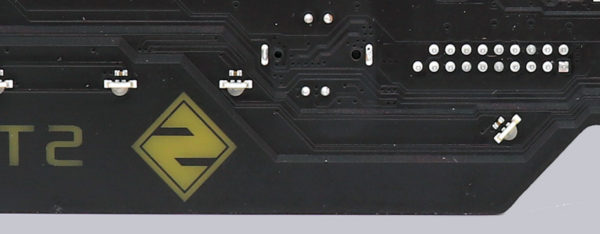
Because already addressable RGB LEDs are mounted under the chipset cooler and under the ASRock B460 Steel Legend, there is already an effective lighting of the motherboard after the first switching on.
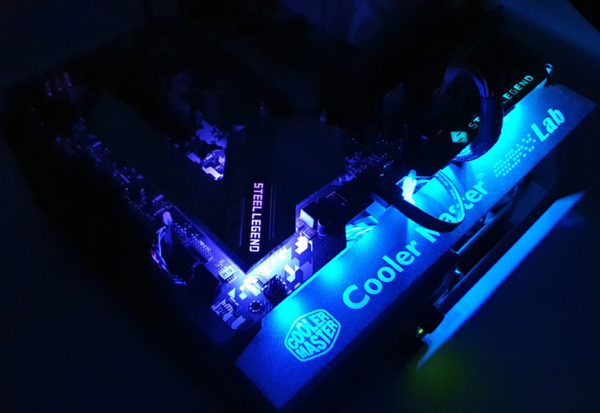
The RGB headers and the integrated RGB LEDs are controlled by UEFI or by the included ASRock Polychrome RGB LED software. There you can select for example the colors in a RGB color selector and you can set whether the RGB headers should be controlled separately or together with the RGB lighting under the chipset cooler and the lettering. The lighting can also be completely deactivated.
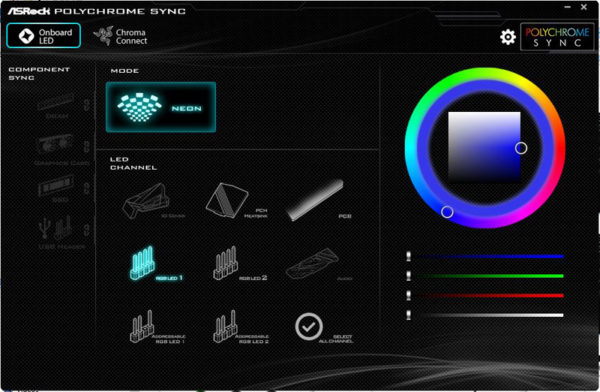
You can select many effects in the ASRock RGB LED menu, for example whether the LEDs should shine continuously, breathe, be controlled randomly or to music and with the addressable RGB connection you even get completely new RGB features like Spring, Meteor, Stack, Cram, Rainbow, etc.
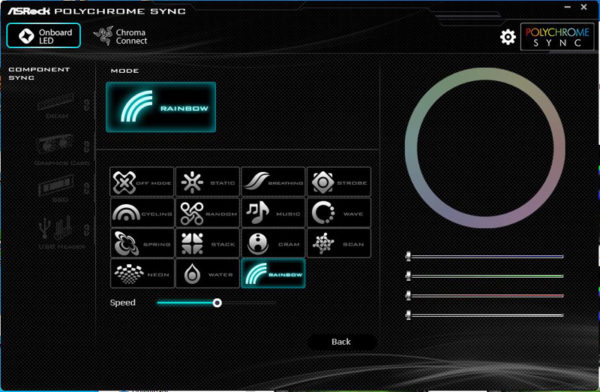
Especially effects such as Rainbow stand out of course.
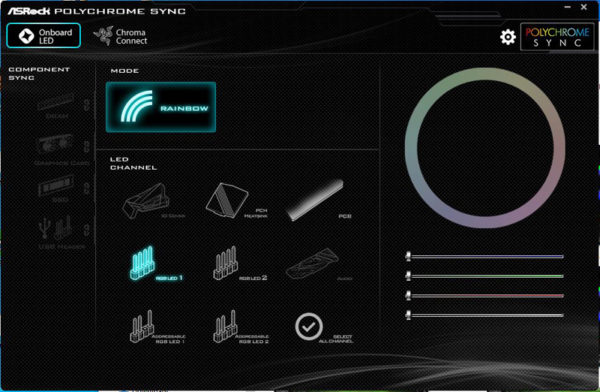
A total of up to 100 addressable LEDs can be individually addressed.
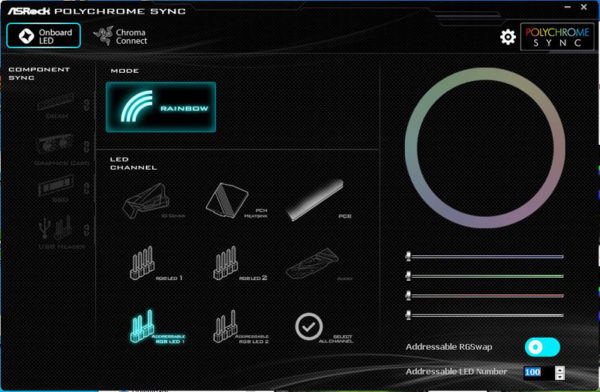
There are lots of great RGB effects that we presented in ASRock Polychrome RGB Software Video on our OCinside YouTube Channel.
Note: Please allow our cookies first to see this external content!
And to get a small impression of the very special ASRock B460 Steel Legend effects, we have created another video here.
Here you can see the two additional RGB and aRGB connections on the right, on the left the internal USB3.2 Gen1 and the USB3.2 Gen1 Type-C front panel connector and in the middle the 24-pin ATX power connector.
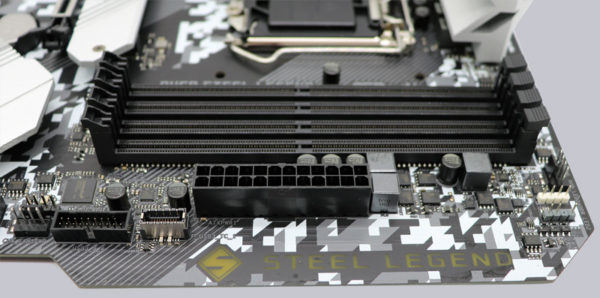
Voltage Regulator and Heat Sink …
The image shows the side view of the mainboard with the two heat sinks on the MOSFETs.

Here you can see the two dismounted aluminum heat sinks, which are pressed together with the heat conducting pad onto the voltage converters.
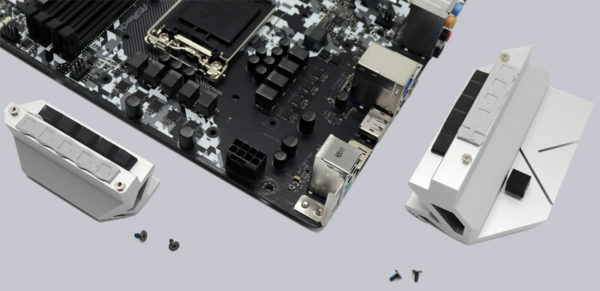
The voltage converter area is well-known structured, whereby the ASRock B460 Steel Legend VRM is build from 9 virtual phases.
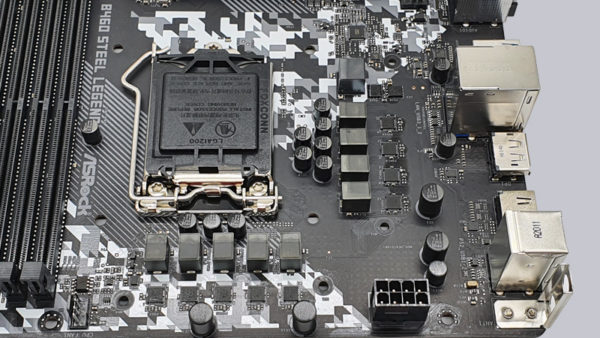
Here you can see again the 50A SiC654 MOSFETs of the so-called Dr.MOS Power Design Power Stage, which are responsible for the power supply of the Intel Comet Lake-S processor on the Intel LGA 1200 socket.
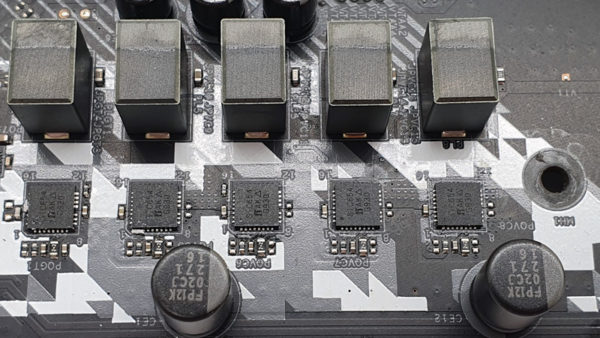
Equipment …
ASRock B460 Steel Legend has many features such as ASRock A-Tuning Tool, ASRock Instant Flash, ASRock Internet Flash, ASRock Easy RAID Installer, 9 Power Phase Design, RGB, Polychrome RGB and ASRock FAN-Tastic Tuning.
Expansion cards …
The motherboard offers two PCI Express 3.0 x16 slots for AMD CrossFireX or nVidia SLI and two PCI Express 3.0 x1 slots.
Memory …
The ASRock B460 Steel Legend Board can be equipped with up to four DDR4 modules and can be upgraded up to a maximum of 128 GB RAM depending on the operating system used (see list). Here you can see a picture of the four DDR4 memory slots with Dual Channel Support:
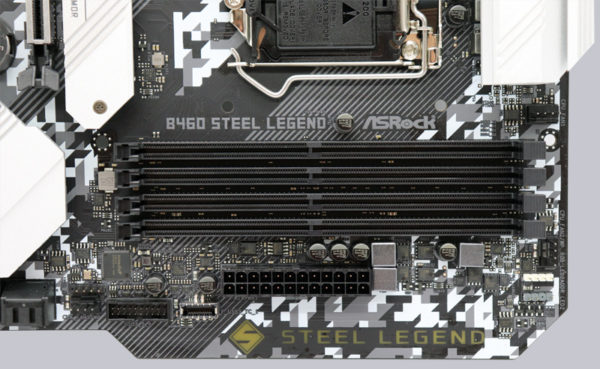
The Intel LGA 1200 motherboard supports DDR4 memory modules and depending on the CPU used can be optimized in the BIOS for DDR4-2933 Quad Channel modules.
Thanks to XMP support (Extreme Memory Profile), XMP memory modules are set correctly with a mouse click in the UEFI, but more about this later. Which exact RAM modules are officially supported, one should read before the purchase at ASRock on the memory support page.
Hard disk connectors …
The ASRock B460 Steel Legend offers a total of six SATA3 ports, four angled and two straight. The cutout of the ASRock Steel Legend board can be very helpful when laying the SATA cables to the rear of the case.
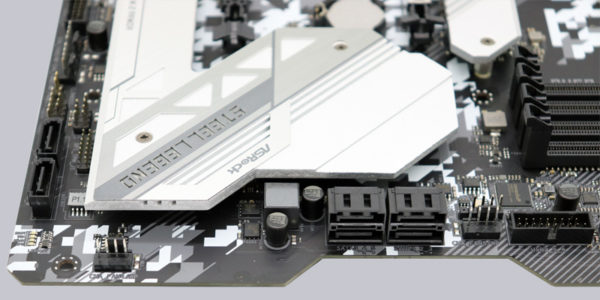
The SATA3 ports support RAID 0, RAID 1, RAID 5, RAID 10, NCQ, AHCI and the hot plug function in AHCI mode (AHCI stands for Advanced Host Controller Interface and should be selected for SSDs in UEFI). Thanks to UEFI BIOS, drives with more than 2TB can also be used for Windows 10 x64 installation. The installation of the drivers ran without problems in Windows 10, so the 64 bit Windows 10 installation was done quickly.
However, we noticed a special thing, because if you just want to continue using your previous legacy BIOS installation on this motherboard, you won’t have any luck! Because the motherboard provides in the BIOS no CSM (Compatibility Support Module) more in addition to the UEFI boot mode. For this reason we have written a guide how to convert your current legacy BIOS mode partitioning with MBR to GPT, so that the hard disk partition is UEFI compliant and you can boot back into Windows 😀
The Intel B460 chipset supports RAID. The appropriate RAID drivers can be installed via the Easy RAID Installer point in the UEFI. The drivers for Windows 10 are delivered on DVD and are also available for download on the ASRock support page. The Microsoft Windows 10 installation is currently preferred.
USB and Firewire …
The ASRock B460 Steel Legend has five USB 3.0 ports (USB 3.2 Gen1) and two USB 2.0 ports on the ATX panel. The B460 does not support USB 3.1 Gen2 ports! On the picture you can see the USB 3.1 Gen1 Type-C port which can be plugged in on both sides.
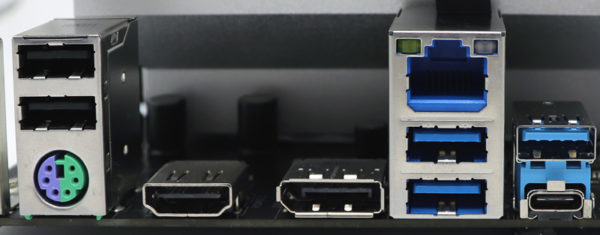
Internally, two USB 2.0 connections for up to three optional USB 2.0 ports and two USB 3.2 Gen1 headers for up to four optional USB 3.2 Gen1 ports are available. The 20-pin header can be connected either to an optionally available USB3.0 front panel or to an enclosure with USB3.0 support. Another new feature is the USB 3.2 Gen1 front panel Type-C connector.
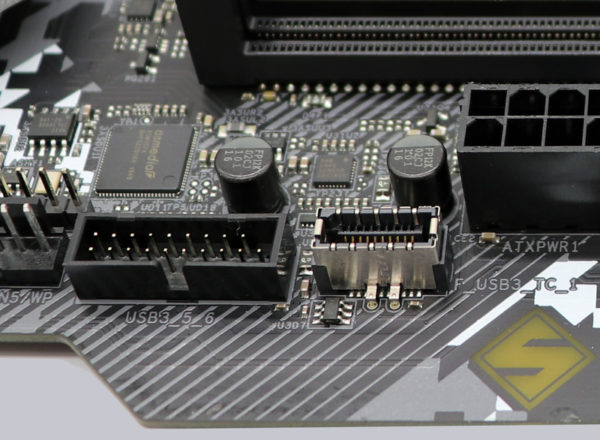
Hint: If you are wondering about the different descriptions of the USB ports, we would like to explain the differences between USB 3.0, USB 3.1 Gen1, USB 3.1 Gen2, USB 3.2 Gen1 and USB 3.2 Gen2. Regarding the USB power for charging devices, USB 2.0 officially provides 5V with 0.5A, thus 2.5W, and USB 3.0/3.1/3.2 officially provides 5V with 0.9A, thus 4.5W, and USB 3.0/3.1/3.2 officially provides 5V with 0.9A, respectively ASRock with Type-A connector up to 1.5A, and USB Type-C connector 5V with 3A, thus 15W (1A in sleep state). Furthermore, the transfer rates of the USB ports are also different. USB 3.1 Gen1 was formerly called USB 3.0 and is therefore identically, they both deliver up to 5 GBit/s. USB 3.1 Gen2 delivers up to 10 Gbps. In addition, there is USB 3.2 Gen2x2, which allows doubling up to 20 GBit/s. A special feature is also available for the Intel JHL7540 Thunderbolt 3 protocol, which allows up to 40 GBit/s! Here you are again the possible transfer rates in a table.
| USB Interface Comparison | ||
| Transfer rates | ||
| Interface | theoretical | practical |
| USB 2.0 | 480 MBit/s | 30 MByte/s |
| USB 3.0 | 5 GBit/s | 450 MByte/s |
| USB 3.1 Gen1 | 5 GBit/s | 450 MByte/s |
| USB 3.1 Gen2 | 10 GBit/s | 800 MByte/s |
| USB 3.2 Gen1 | 5 GBit/s | 450 MByte/s |
| USB 3.2 Gen2 | 10 GBit/s | 800 MByte/s |
| USB 3.2 Gen2x2 | 2×10 GBit/s | 1600 MByte/s |
Network …
The ASRock B460 Steel Legend has a Realtek Dragon RTL8125BG chip with which the 10/100/1000/2500 network port at the ATX panel is realized. The Realtek LAN port is WoL capable, offers LAN cable detection, custom prioritization, supports energy efficient Ethernet according to the 802.3az standard, PXE and more.
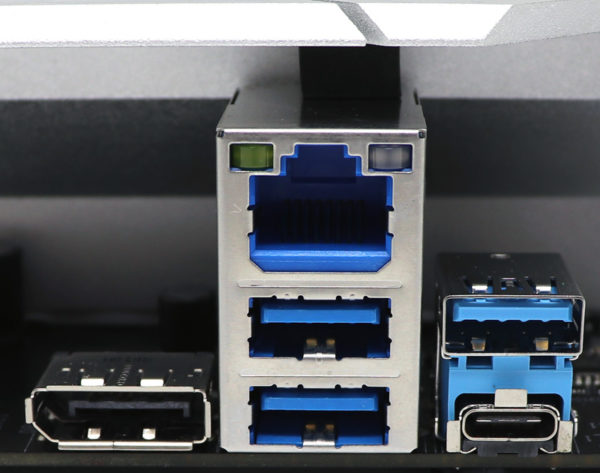
Sound …
The ASRock B460 Steel Legend motherboard has the better Realtek ALC1200 audio codec with content protection, 120dB SNR DAC, which supports 7.1 surround sound and outputs it for example analog over 5x 3.5mm jacks on the ATX panel or over the internal front panel audio connector. There is also an optical SPDIF digital output and premium Blu-Ray support as well as Nahimic audio software. This makes an additional sound card with digital outputs unnecessary for most users.
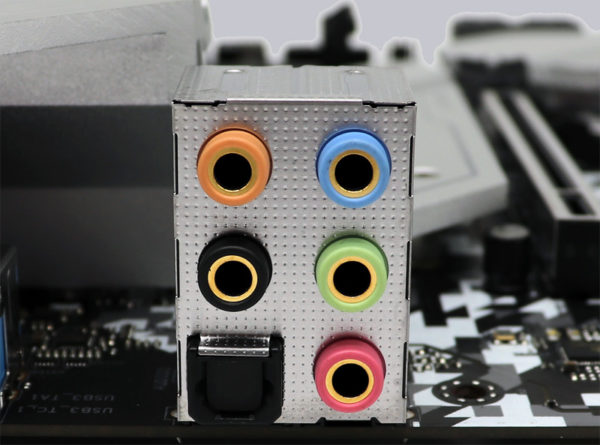
ATX Backpanel connections …
From left to right you can see the not equipped WiFi antenna panel, 2x USB 2.0 ports and 1x PS/2 connector for PS/2 keyboard or PS/2 mouse, HDMI, DisplayPort 1.4, RJ45 2.5 Gigabit LAN and 2x USB 3.2 Gen1 Type-A, 1x USB 3.2 Gen1 Type-A and 1x USB 3.2 Gen1 Type-C, optical SPDIF output and 5x 3.5mm jacks for sound.

Test System …
Now we come to the Intel LGA 1200 CPU socket. The new 10th Gen LGA1200 socket looks similar to the LGA1151 socket and the 9th Gen LGA1151 v2 socket of the previous generations, but they are not compatible with each other! So you have to install a new Intel Comet Lake-S processor or similar to work on the Intel B460 motherboard. The socket was provided with a lever, which presses the relatively small CPU evenly on the pins in the socket. As always, do not touch the contacts during installation or even bend the contacts in the socket. When storing or transporting, it is essential that the protective cap is mounted on the socket. If pins are bent and the mainboard doesn’t work anymore, we help with words and deeds in the Intel Forum.
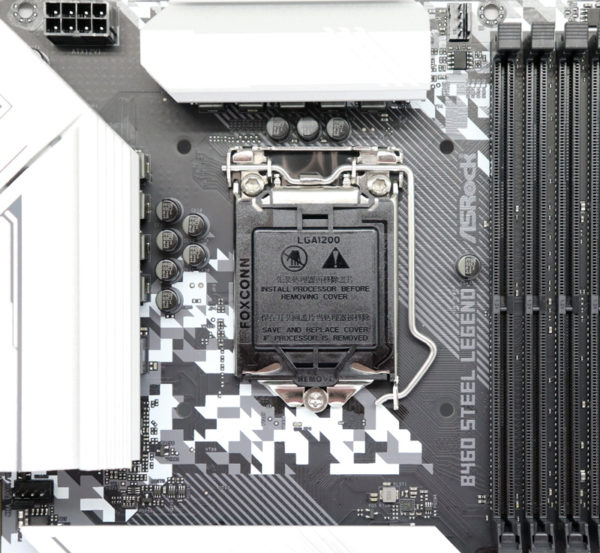
We have equipped the test system with an Intel Core i5-10500 CPU.
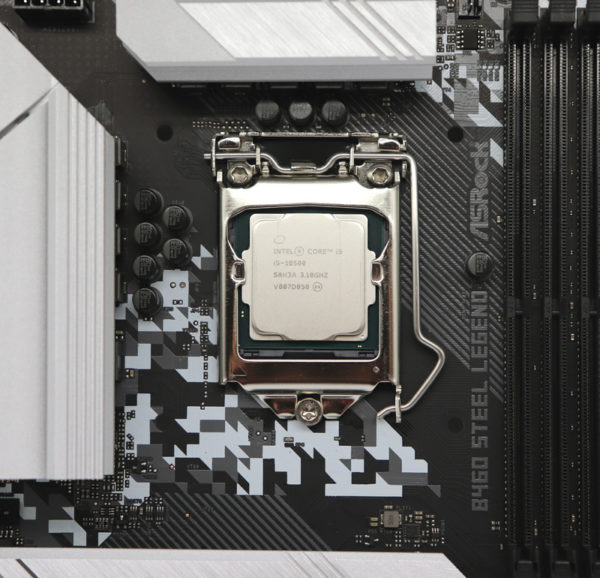
Intel LGA 1200 CPUs support Dual Channel Mode only. So the two memory modules are used on the Intel B460 motherboard to get Dual Channel support.
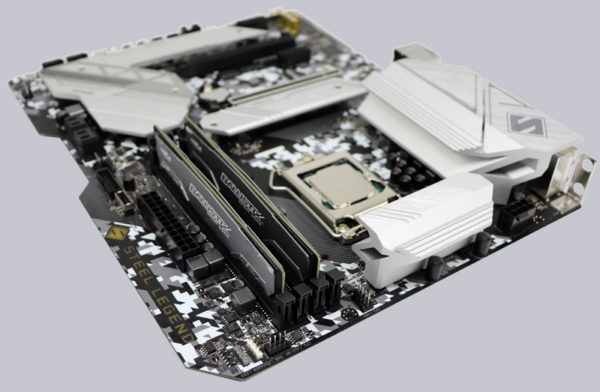
Here you can see again the two DDR4-2400 4GB modules from Crucial in the ASRock B460 Steel Legend motherboard.
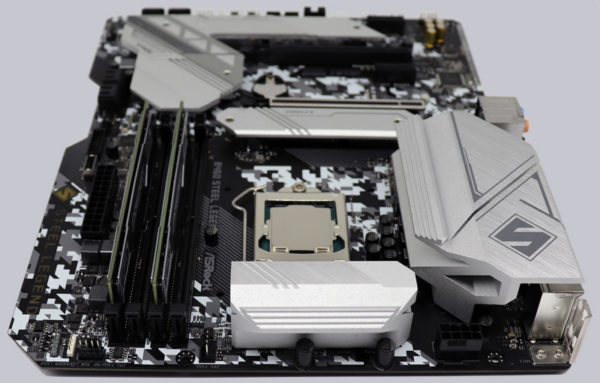
For the tests with the latest Intel LGA 1200 processors we use a Arctic Freezer 34 eSports grey/white air cooler with Arctic MX-4 2019 Edition thermal compound and an Icy Dock MB171SP-B Turbo Swap removable frame for a quick exchange of the HDD or SSD, in our case a Crucial MX SATA SSD.
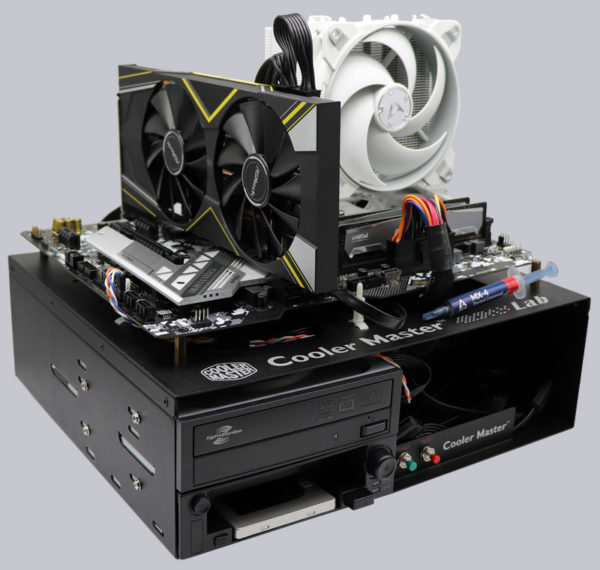
This is how the 6-cores (12 threads) of the Intel Core i5-10500 CPU look in the Windows 10 task manager with full load in Prime95.
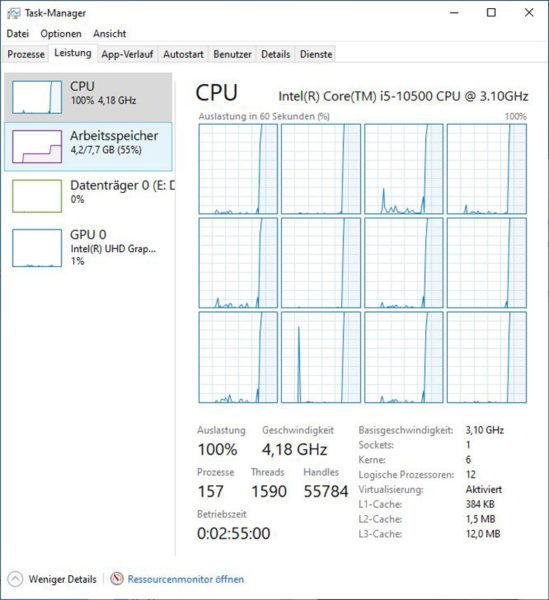
As you can see on the thermal image of the ASRock B460 Steel Legend PC under heavy load with Prime95, the heat of the voltage regulators and coils is dissipated relatively well.
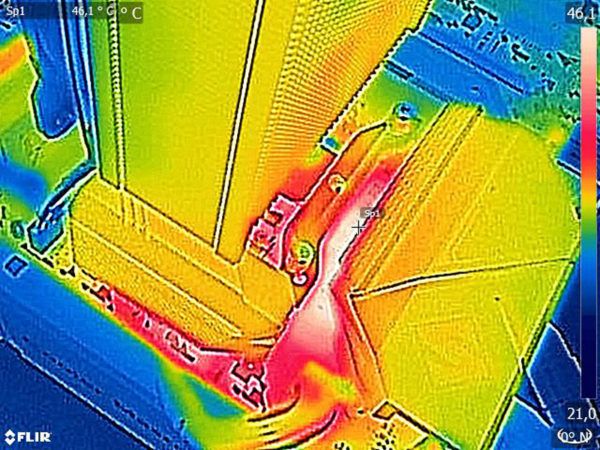
Here you can also see the heat hotspot on the ASMedia ASM1074 USB3.1 Hub chip, which is even higher than the temperature of the VRM coolers. Without anticipating the next page of the test with the overclocking, it looks bad with the Intel B460 chipsets anyway with the overclocking, so this ASRock B460 Steel Legend is not intended for large heat development by overclocking anyway.
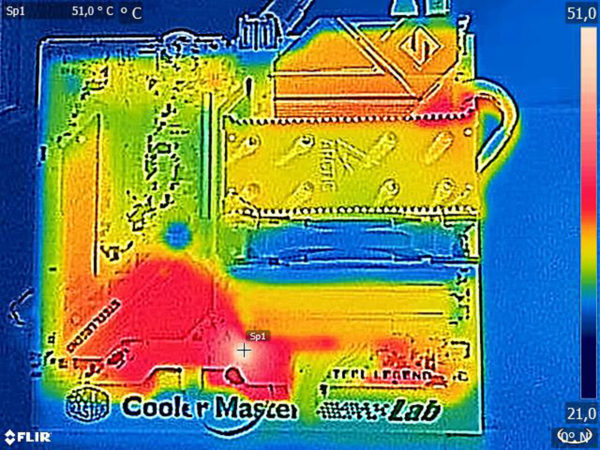
ASRock B460 Steel Legend BIOS and Overclocking …

